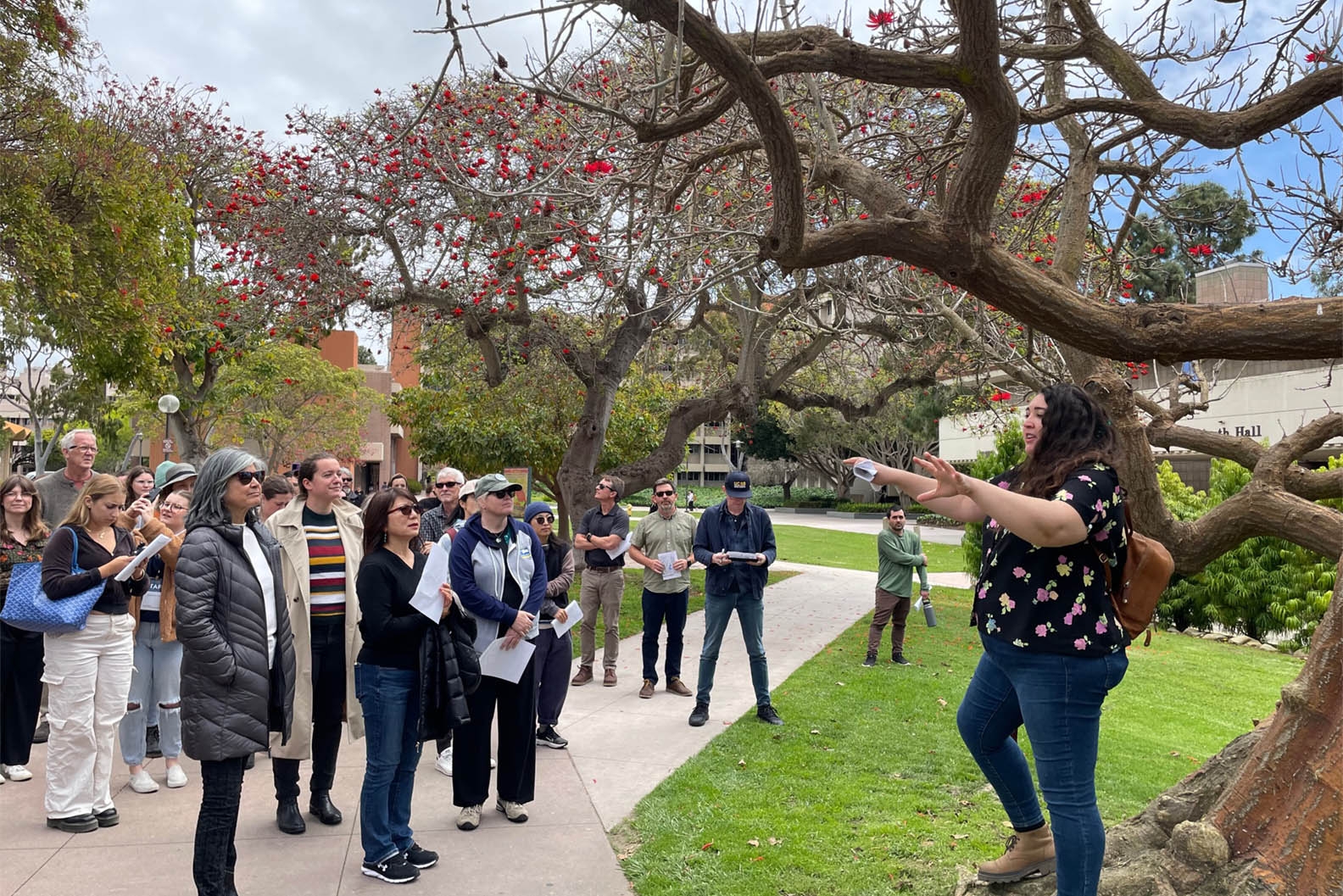Very Important Trees Tour imparts knowledge, inspires appreciation of campus plants

Beauty is all around us at UC Santa Barbara, but for Cameron Hannah-Bick a highlight is the campus vegetation.That became very clear on the midday “Very Important Tree Tour" she led in April, fittingly scheduled between Earth and Arbor Days.
“I love inspiring an appreciation of plants in people, for their botanical uses, or medicinal uses, or just because they’re pretty, or they come from an interesting place or they're endangered," she told the large group, composed mostly of staff with a few faculty members along too.
Hannah-Bick, a biology graduate student and manager of the UCSB greenhouse, handed out maps that identified species and locations as the group gathered outside Cheadle Hall – appropriately, since Chancellor Vernon Cheadle was a botanist and noted campus tree champion. Hannah-Bick then moved quickly from tree to notable tree, taking questions and imparting a range of facts and information, even encouraging participation.
“If you want to look around on the ground, let’s find some reproductive organs,” she said as the group neared a Liquidambar styraciflua tree.The ficus microcarpa inspired a discussion about fig wasps and the gum trees, triggering memories of high school biology lessons around symbiosis.
There was great interest in, and a few fists thrown, at the punching tree (Melaleuca quinquenervia) which is soft to the touch, even though you wouldn’t know by looking at it. And the iconic coral trees, or Erythrina species, members of the bean family, were an important stop.
“There are around 130 species of coral trees,” explained Hannah-Bick.
Overall there was a lot of enthusiasm, appreciation and curiosity. “I’m fascinated by the diversity and beauty of the trees on campus and want to know more,” said Ron Hirst, a tax compliance manager at UCSB for 12 years. “I’m also a birdwatcher and these fruitful trees attract birds.”
Patti Winans, associate director of development for the Bren School, said that she loves a lunchtime walk to get away from her computer. “When I step away from my desk I get that sense of refresh. I enjoy the vegetation here but wanted to learn more about it,” she offered as her reason for joining the tour.
And why not? With endangered Metasequoias coexisting with cycads and Bunya bunyas, to name just a few, getting away from one’s desk on a spring day seemed like a particularly good idea.
“Any more questions about eucalyptus? I can talk all day about eucalyptus,” inquired Hannah-Bick as the tour was coming to a close. There were – eucalyptus trees are a campus and Santa Barbara staple.
“I’ve been on campus for 30 years and I’ve never learned about all the trees around here before now. We need a tour like this every month — could be nature, could be history. There’s so much to learn about on this campus,” said Paolo Gardinali, director of UCSB Professional and Continuing Education (PACE).
So many people signed up for the tour when it was announced that a second was added. For anyone who missed both, there’s another vegetation learning opportunity during Staff Appreciation Week. On Monday, May 6 at 3:50 p.m., faculty member emeritus Bruce Tiffney will lead a campus specimen plants tour. Register here.
Shelly Leachman
Editorial Director
(805) 893-2191
sleachman@ucsb.edu



